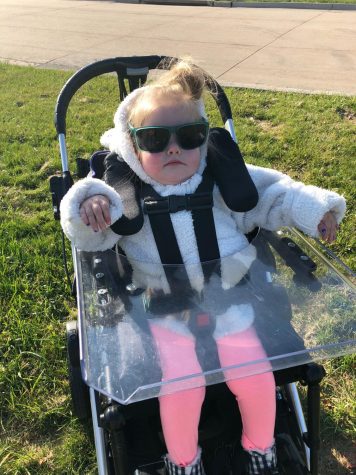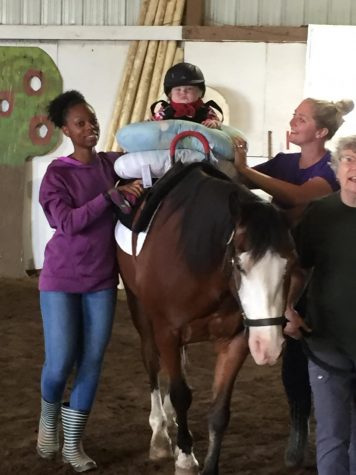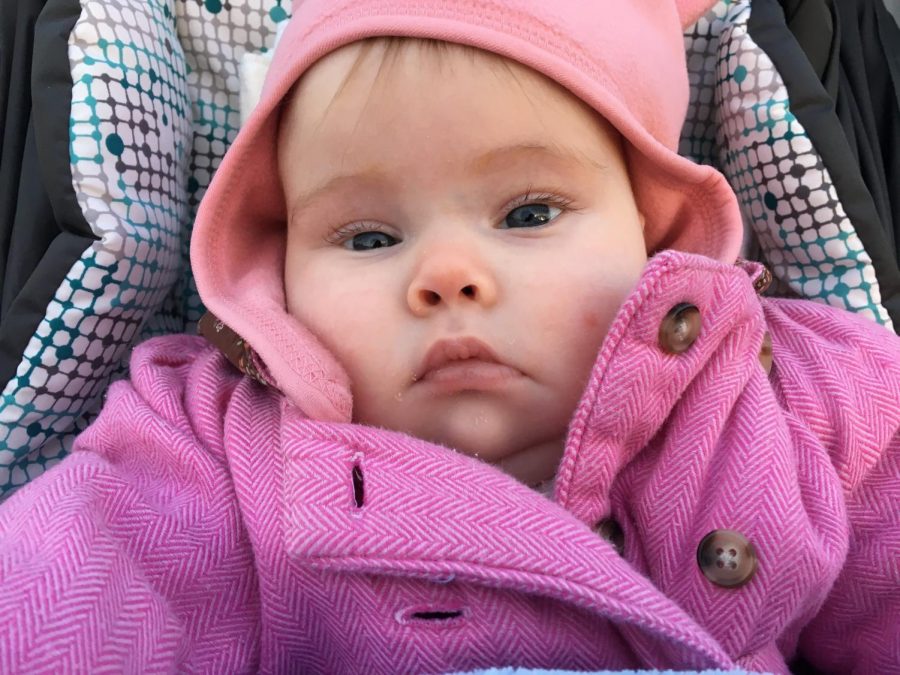Your donation will support the student journalists of West High School. Your contribution will allow us to purchase Scholarship Yearbooks, newsroom equipment and cover our annual website hosting costs.
Symptoms
December 9, 2019
A photo from Emilia “Emmie” Boylan’s invitation to her first birthday party.

Emilia “Emmie” Boylan sitting in her adaptive chair while wearing sunglasses.
Aside from having a severe case of MMC, Emmie also has some symptoms that are not linked to spina bifida. Emmie has minor hearing loss, so she has had tubes put in twice and has hearing aids. In addition, she has hypotonia, or low muscle tone, to a degree where she almost always uses an adaptive chair. Her hypotonia also means that she has sleep apnea. Sleep apnea is a condition where her airway closes off when she is sleeping. She’s not strong enough to keep it open when asleep.
“She reacts the way you or I would if we tried to hold our breath for as long as we could and then do this wake up kind of panic. So in the middle of the night [sleep apnea] keeps her from sleeping,” John said.
The Chiari II malformation and hypotonia both affect Emmie’s coordination. She has little fine motor control so she has a hard time playing with toys and she cannot feed herself. Her hypotonia also means that she can only eat soft foods like pudding, milk and soft fruits.
“Either my wife or I or someone else basically always has to be with her, otherwise she just lays there,” John said. “One of us is always trying to position her body in tummy time so she can swipe and play with the toy, or trying to help her balance herself as she sits up or holding her a certain way so that she can reach to turn the pages as we’re reading books.”
Infographic by Gwen Watson
To help improve her motor control she has physical therapy and occupational therapy. Occupational therapy helps patients live their fullest life. They work on cognitive, physical, sensory and motor skills. Occupational therapy is more common among adults because children do not have jobs, but occupational therapy helps kids with school and daily activities.

She has a wide range of other therapies to help as well including feeding therapy, which teaches kids to eat and helps them with their eating schedule; music therapy, which uses music to help mental health; and aquatic therapy, which is a form of physical therapy where exercises are performed in the water. Finally, Emmie has equine therapy, or horse therapy, where she gets strapped into a horse saddle and the horse walks around to help improve her balance.
“I always think of it as like when I played football, you knew you were strong if you could lift while you were on a medicine ball, because it was like a stability kind of thing,” John said. “So the horse therapy like requires her to … hold her balance and hold her strength that way.”
Emmie is also nonverbal, which is not commonly associated with spina bifida. She has two speech-language pathologists (SLP), one at Borlaug Elementary, where she goes to pre-kindergarten in the afternoons, and one at ChildServe, an organization that helps with the rehabilitation and care of children.

